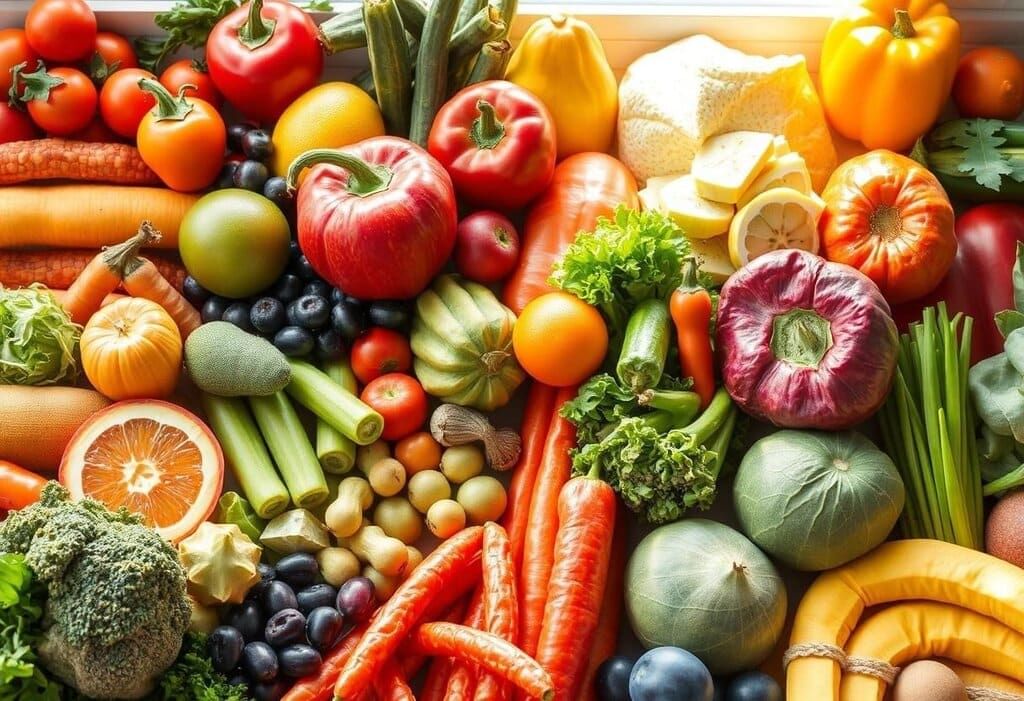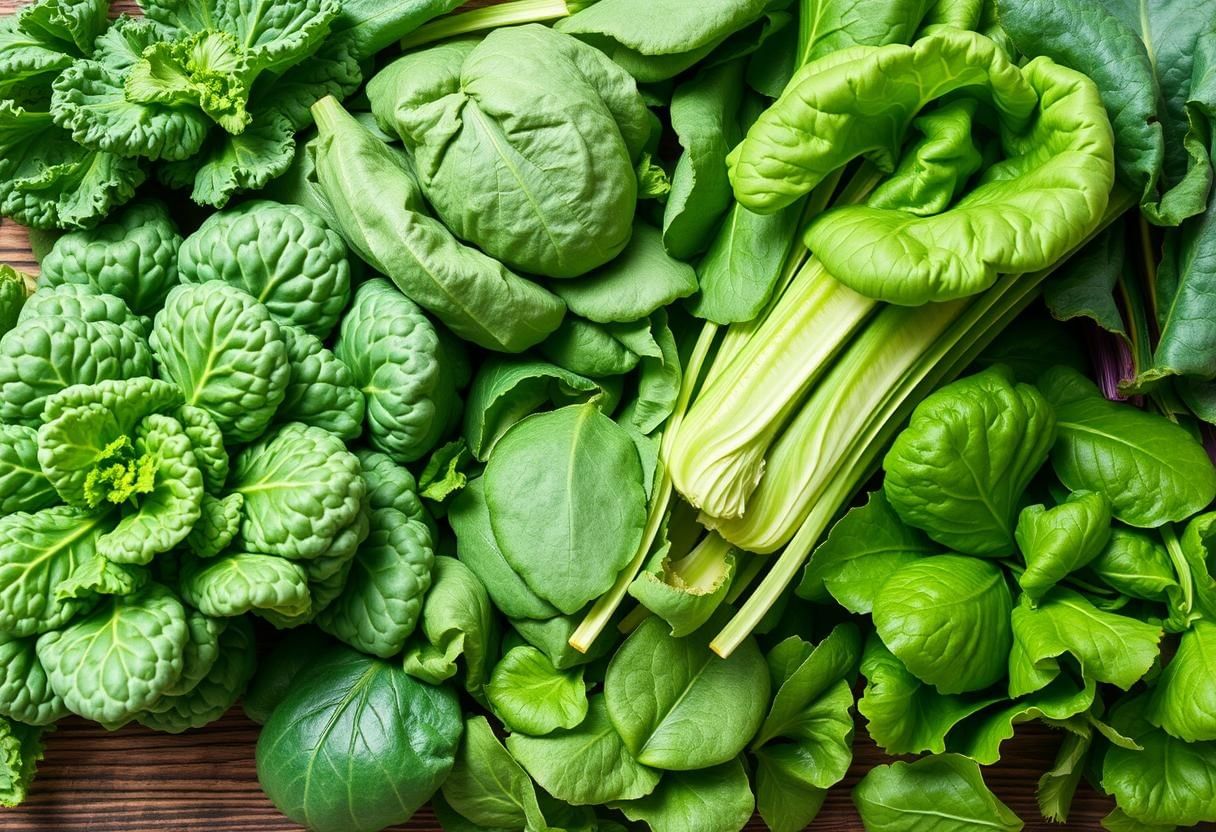Notes: Food & Nutrients | Science & Pedagogy Paper 2 for CTET & TET Exams - CTET & State TET PDF Download
Vitamins
Vitamins are essential substances in the body that help regulate normal metabolism and ensure the proper functioning of various bodily processes. They are crucial for the body's healthy growth and development. The term "vitamine" was first introduced by the scientist Funk in 1912. It is derived from the words "Vital" and "Amines" because these compounds are necessary for the body's proper functioning. Funk’s term "vitamine" was based on the assumption that these compounds were amines, but later research showed this was not universally true, leading to the term "vitamin."
In 1913, scientists Elmer McCollum and colleagues discovered that some vitamins dissolve in water, while others dissolve in fat. This led to the classification of vitamins based on their solubility. Based on these, vitamins are classified into two categories.
Water-soluble vitamins:
- Vitamin B (Complex)
- Vitamin C
Fat-soluble vitamins:
- Vitamins A
- Vitamin D
- Vitamin E
- Vitamin K
 Sources of Vitamins
Sources of Vitamins
Water-soluble vitamins
Vitamin 'B' (Vitamin B)
Vitamin B refers to a group of vitamins known as the "B" complex. The vitamins in this group include:
1. Vitamin B1 or Thiamin (Thiamine)
Thiamin was first isolated by Barend Jansen and Willem Donath in 1926, and its role in preventing beriberi was established earlier by Christiaan Eijkman and others.
Functions of Vitamin B1
- This vitamin aids in the metabolism of carbohydrates.
- Required by the muscles of the digestive system, which keep the speed of appetite maintained.
- For the nervous system to function well, its presence is mandatory.
Sources
The germ of cereals and pulses, yeast and dried fruit, meat, fish, eggs, milk and milk products in the vitamin is found in reasonable amounts.
2. Vitamin B6 or Pyridoxine
Pyridoxine was synthesized by Richard Kuhn and others in the late 1930s. It is part of the vitamin B6 group, which functions as a coenzyme (pyridoxal phosphate),
The function of Pyridoxine
- Pyridoxine helps maintain healthy red blood cells and supports functions related to neurodegeneration.
- It plays a crucial role in the metabolism of amino acids, including nicotinic acid and tryptophan.
Source of receipt
Dry yeast, wheat germ, meat, liver, lentils, soybeans, peanuts, eggs, milk, yoghurt, salad leaves, spinach, etc. are the major source.
3. Vitamin B12 (Vitamin B12 or Cyanocobalamin)
Also known as cyanocobalamin, Vitamin B12 is important for preventing anaemia. Humans must obtain it from food sources, while some organisms can rely on their intestines to produce it. Plants do not contain this vitamin.
Function
- Vitamin B12 aids in the metabolism of proteins.
- It helps produce blood cells in the bone marrow.
- This vitamin supports metabolic activity in vascular tissue.
Key sources of Vitamin B12 include liver, eggs, meat, fish, and milk.
Vitamin 'C' or Ascorbic Acid
The term "Ascorbic acid" comes from its ability to prevent scurvy.
Functions of Vitamin C
- Vitamin C is essential for maintaining the health of teeth, bones, and the walls of blood vessels.
- It plays a vital role in wound healing.
- Vitamin C enhances iron absorption by reducing ferric iron to ferrous iron.
- A deficiency of vitamin C in children can lead to symptoms such as fatigue and bleeding gums.
- This vitamin also helps protect the body against various diseases.
- The adrenal gland, with the support of vitamin C, is important for hormone synthesis.
- Vitamin C supports the production of collagen, which is crucial for connecting tissues throughout the body, including bones.
- A lack of vitamin C can result in weak and hollow bones.
Source
- Vitamin C is found in abundance in amla, guava, and fresh, juicy, sour fruits such as lemon and orange. It is also present in sprouted grains and pulses.
- Small quantities of vitamin C can be found in milk and meat.
Fat-soluble vitamins
Vitamin A
Vitamin A is derived from carotenoids, yellow and orange pigments found in fruits and vegetables, which serve as provitamins. In plants, beta-carotene is a key precursor of vitamin A, converted into retinol in the body. Retinol is the active form of vitamin A, essential for various bodily functions.
Sources
- It is found in vegetables that are yellow, red, such as tomato, carrot, papaya, sweet potato, mango, peaches, peas and green leafy vegetables (coriander, radish, mint, sugar beet), etc.
- They are mainly found in fish liver oil. In addition, the egg, milk and butter, and get adequate amounts.
Functions of vitamin A
- Vitamin A is crucial for maintaining healthy vision, particularly in low-light conditions.
- It plays a vital role in the health and function of epithelial tissues, which line various surfaces in the body.
- This vitamin is essential for the production of mucous secretions that help stabilize tissues.
- Vitamin A is important for the structure of internal surfaces in the body, including the tongue, eyes, respiratory tract, oral cavity, and reproductive and urinary systems.
- It helps keep skin cells smooth and flexible.
- A deficiency in vitamin A can lead to serious eye conditions, such as keratomalacia, where the cornea softens.
Vitamin K
 Leafy Green Vegetables
Leafy Green Vegetables
- Vitamin K is crucial for blood clotting, helping to prevent excessive bleeding. It is not commonly taken as a dietary supplement like many other vitamins.
- Vitamin K is a group of compounds, primarily vitamin K1 and vitamin K2. Vitamin K1 is found in leafy greens and vegetables, while K2 is mainly present in meats, cheeses, and eggs, and is also produced by bacteria in the gut.
- Good dietary sources of vitamin K include green leafy vegetables such as collards, lettuce, kale, mustard greens, parsley, romaine lettuce, spinach, Swiss chard, and turnip greens. Other sources include broccoli, Brussels sprouts, and cauliflower.
Functions of Vitamin K
- Vitamin K is essential for the synthesis of proteins required for blood coagulation and for the metabolism of bone proteins.
- It helps in preventing excessive bleeding by facilitating the clotting process.
- Vitamin K2, in particular, plays a role in bone health by regulating calcium metabolism in bones and blood.
Vitamin E
Vitamin E is key to strong immunity and healthy skin and eyes. In recent years, vitamin E supplements have become popular as antioxidants. These are substances that protect cells from damage. However, the risks and benefits of taking vitamin E supplements are still unclear.
Sources
- Nuts such as almonds, peanuts, and hazelnuts are excellent sources of vitamin E.
- Vegetable oils like sunflower, wheat germ, safflower, corn, and soybean oils are also rich in vitamin E.
Functions of Vitamin E
- Vitamin E is important for fertility and reproductive health.
- A deficiency in vitamin E can lead to sterility and may reduce sperm production in men.
- In pregnant women, a lack of vitamin E can result in fetal death.
- As an antioxidant, vitamin E helps to prevent the breakdown of red blood cells and extends their lifespan, contributing to overall blood health.
Vitamin D
Vitamin D is a fat-soluble vitamin that is naturally present in very few foods, added to others, and available as a dietary supplement. It is also produced endogenously when ultraviolet rays from sunlight strike the skin and trigger vitamin D synthesis. Vitamin D obtained from sun exposure, food, and supplements are biologically inert and must undergo two hydroxylations in the body for activation.
Sources of Vitamin D
- Fatty fish such as tuna, mackerel, and salmon are among the best natural sources of vitamin D.
- Foods fortified with vitamin D include certain dairy products, orange juice, soy milk, and cereals.
- Other sources include beef liver, cheese, and egg yolks.
Functions of Vitamin D
- Vitamin D plays a crucial role in regulating the absorption of calcium and phosphorus in the intestines, which are vital minerals for various bodily functions.
- A deficiency in vitamin D can lead to reduced absorption of these minerals, causing them to be excreted in waste.
- Vitamin D is essential for proper growth and is particularly important for the development and maintenance of healthy bones and teeth.
- It aids in the healthy development of teeth by ensuring the proper formation of dentin and enamel.
- Vitamin D also regulates the function of the parathyroid gland, which plays a key role in calcium metabolism.
- Additionally, it helps maintain muscle function and nervous system health.
- There is evidence to suggest that vitamin D may help protect against certain infections, including chickenpox and whooping cough.
|
35 videos|145 docs|32 tests
|
FAQs on Notes: Food & Nutrients - Science & Pedagogy Paper 2 for CTET & TET Exams - CTET & State TET
| 1. What are the different food groups that provide essential nutrients? |  |
| 2. How can one ensure a balanced diet to meet their nutritional needs? |  |
| 3. What are some common nutrient deficiencies and their symptoms? |  |
| 4. How does cooking affect the nutrient content of food? |  |
| 5. What are some tips for maintaining a healthy diet while on a budget? |  |

















